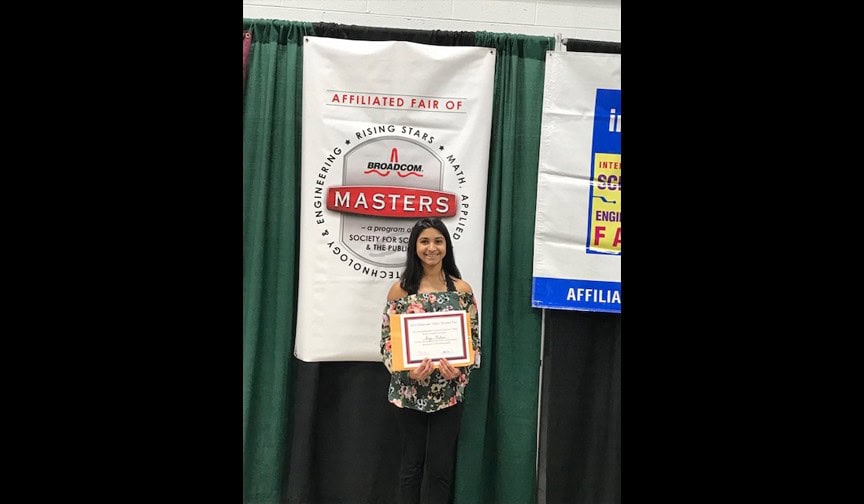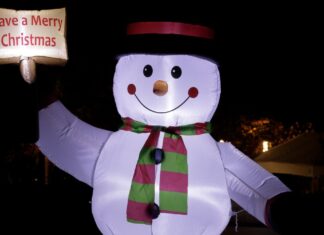
Maya Butani is seeking solutions to global problems with her science fair projects.

For as far back as she can remember, Maya Butani has been curious about how things work. The eighth grader at William Allen Middle School said science has offered her a means to figuring that out. An avid science lover, Butani carefully investigates a “world problem” and tries to find answers to submit to the local science fair.
Butani received the Best in Fair Coriell Award for best middle school project and went on to compete at the regional Delaware Valley Science Fair. She won first place in her category for the third year in a row for her project in which she created a sensor to detect water contamination. Butani was also recently chosen as a finalist for the ProjectCSGIRLS National Gala in the D.C. metro area this June.
The Coriell Institute Science Fair first came on Butani’s radar three years ago at school. She said when she heard about it, she grabbed the forms and got to work on her first project creating bioplastics from food. Last year, Butani created “safer herbicides” from the parts of crops that are usually disposed of. Both years, she took home top honors in the chemistry category.
“Each time, I’ve done a project that I felt really had a global impact,” Butani said.
Inspiration for this year’s project struck when she was reading about sensors. She said she was engrossed in an article about how sensors work and started thinking about how Moorestown has had issues with with its water quality. She said she wanted to use what she knew about sensors to to find a way to monitor water quality.
Butani spent nearly two months delving into research. She said she looked into the different parameters used to monitor water quality and found that most tests took specific measures for certain chemicals. She said most water contamination occurs from a sudden event, such as a chemical spill, and for that reason, she was looking for a way to monitor a general change in water.
She said since water carries a neutral charge, when chemicals enter the water supply, it creates a change in the water’s conductivity.
“My sensor reads that and reads those changes, so when it notices one of those, it alerts the user and basically is able to tell you a change in your water quality has occurred, which might make it unsafe to drink,” Butani said.
Butani created two working sensors for the project and ran more than a 100 tests to ensure their functionality. She came up with five or six prototypes before creating two graphite electrodes that pass a current between them when there is a change in the water’s conductivity.
Based on the change in voltage, a microchip reads a value that allows Butani to approximate the amount of contamination in the water. She tested her sensors using baking soda and other common materials that mimic the behavior of contaminants and compiled all of her research onto a poster to present the day of the fair. Ultimately, she placed first in the environmental category.
She said the most challenging aspect of the project was teaching herself to code. Using a combination of YouTube tutorials and coding websites, Butani learned how to write code and how to painstakingly debug it when a glitch occured.
Butani’s mother, Savita Butani, said she is constantly amazed by her daughter’s dedication. She said she spends countless hours apart from her schoolwork independently conducting research and experiments.
Savita said her daughter’s dedication to scientific inquiry has opened new doors. In April, Butani was invited to present her research alongside high school and college students at the Chromatography Forum of Delaware Valley in Delaware, and this June, Butani will attend the ProjectCSGIRLS National Gala, which will include STEM workshops, technology lectures and an awards ceremony where her project will be judged.
Savita said while her daughter hasn’t decided on a career path yet, she knows she’s looking to do something where she can help lots of people.
“She has higher aspirations to solve big problems,” Savita said.









